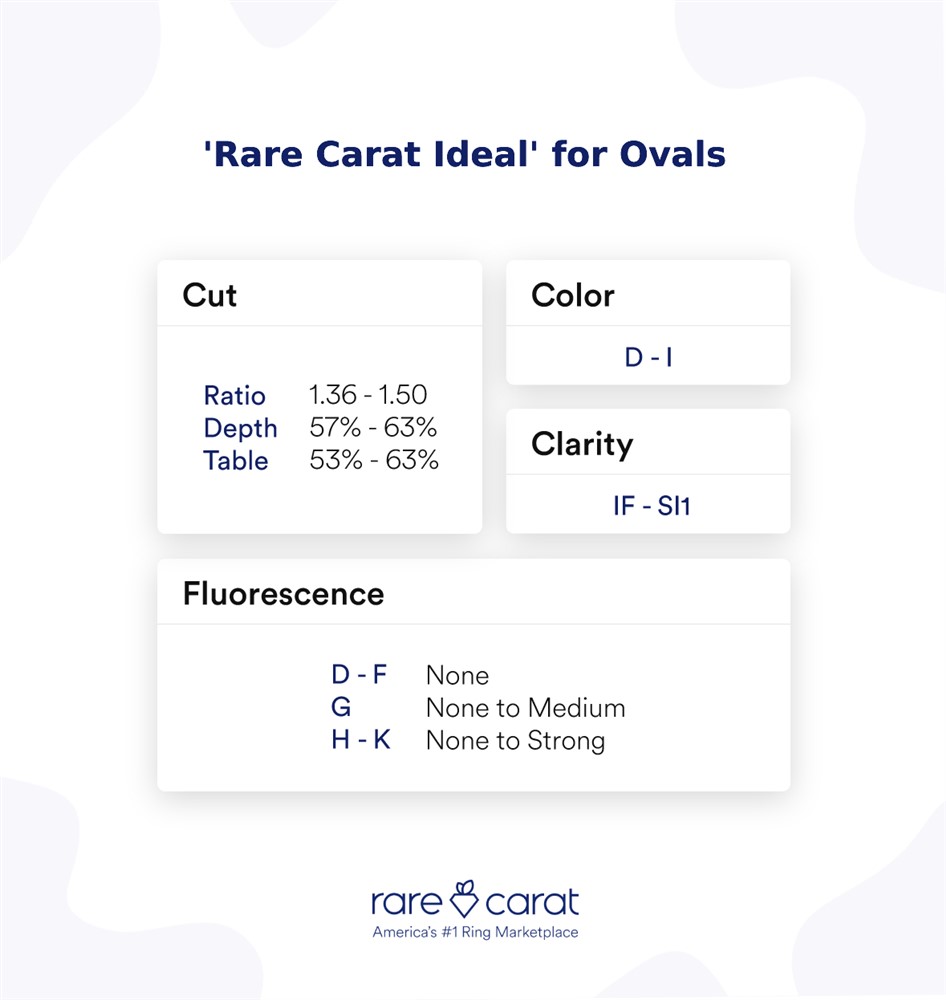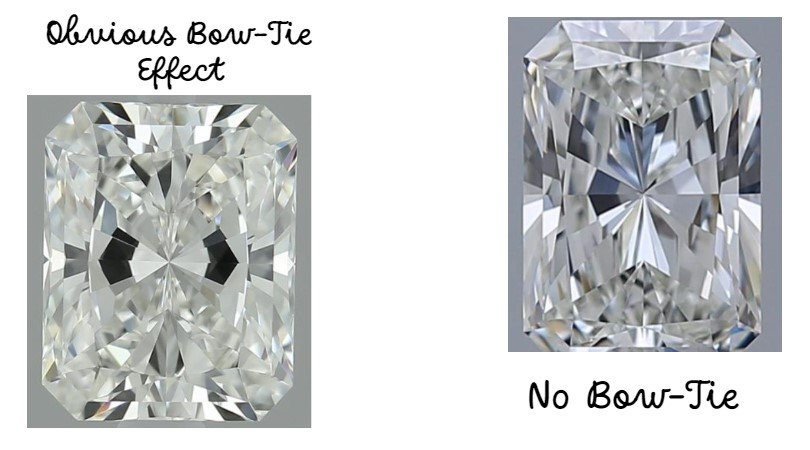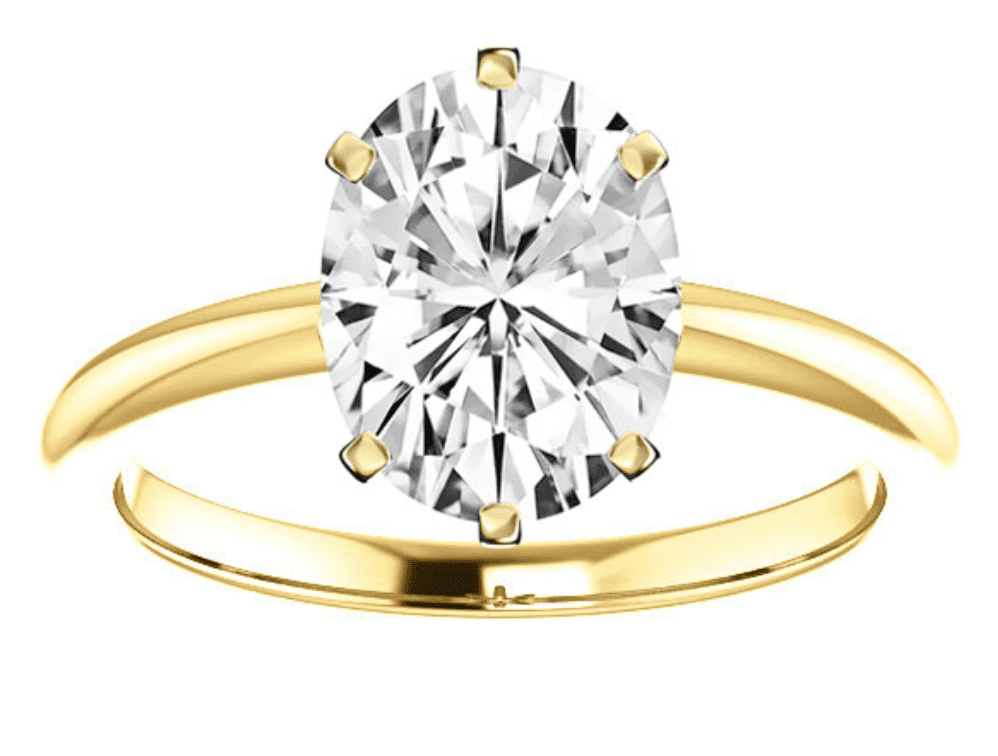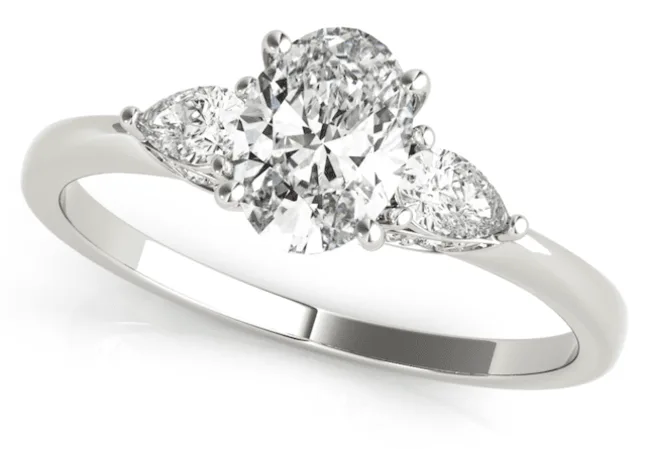Find Your Perfect Oval Diamond Ring | Rare Carat
It's been recently published that jewelers have been having a hard time keeping ovals in stock. We know this is true because our data showed that 15% of you selected ovals—second only to rounds. We get it, who can say no to the incredibly versatile shape that looks good in and with everything? Don’t feel worried about missing out on finding your diamond however! We’ve got over 10,000 ovals to choose from.
But I know what you’re thinking—sure there’s all the reading material, but what about the actual practice? You’ve topped up your knowledge with our educational Oval Cut guide but still feel uncertain in actually finding that perfect ring. No problem.
Here’s a handy reference chart with recommended ranges—assuming a colorless/near colorless stone (D–F/G–J) is desired:

Chances are you already have a carat weight in mind, if not, the US nationwide average is a 1.00 carat.
The Cut
Why start with cut? Bow-ties. The saying “when in doubt, dress up” certainly doesn’t apply here. Like pears and marquises, ovals will inevitably show some form of a bow-tie but can vary from being visibly “slight” to “noticeable” by GIA’s terms. You will be able to mitigate those dark areas and maximize brightness/sparkle by staying within these provided ranges.
All the numbers can seem overwhelming, but you’re in luck! We’ve crunched those numbers (and some more), and all you need to do is look for “Rare Carat Ideal”.

Color and Clarity
According to various sources, ovals are typically priced around 10–30% lower than their round counterparts. Don’t believe it? I just compared 1.00 carat versions (H/VS2) of the two shapes here on Rare Carat, and the oval was nearly 34% less!
And the good news doesn’t just stop here. If looking to further maximize on size and cost, this is where the rest of the chart comes in. Jumping ahead one step—the particular faceting on ovals helps hide most inclusions save for those pesky black crystals that take up all the attention center stage so explore only up to friendly SI1s that appear eye clean.
But here’s the moment of truth. Diamonds are color graded face down but can sometimes tell a different story face up. While ovals look approximately 10% larger than rounds, they do tend to show color.
Fluorescence
Therefore, we arrive at the option of fluorescence (G color and lower). Remember, this UV light related characteristic doesn’t compromise the diamond’s structure and is difficult to detect for the average observer. Strong fluorescence has been noted to help negate the perception of yellower tints, but we recommend keeping it to the provided ranges to avoid milky haziness.
Noteworthy for pricing, the market can vary up to 15% cheaper for stones with fluorescence. True to form, I found the below 1.50 carat oval with medium intensity priced 11% lower than a comparative diamond with none.
I bet you’re itching to get started. Last tip—assuming we’re still prioritizing a near colorless look here, consider a yellow gold setting for an optical illusion of a whiter stone (click link for other tips!).

Ok, I dub thee now graduated with honors! Grab that chart and head over to that search page.


Oval Diamond Ring FAQs